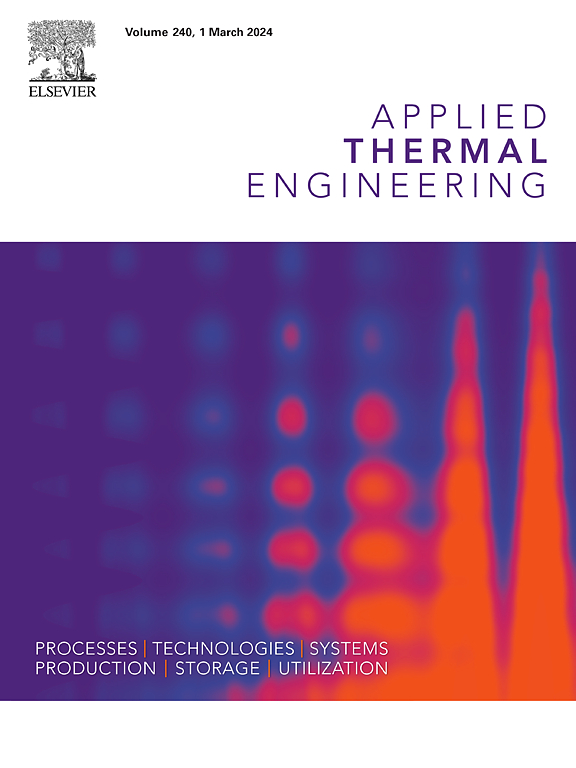考虑非均匀发热的袋式锂离子电池液体冷却板的实验和数值研究
IF 6.1
2区 工程技术
Q2 ENERGY & FUELS
引用次数: 0
摘要
确保锂离子电池的热安全需要高效可靠的热管理系统。然而,锂离子电池的非均匀发热会导致温度分布不均,这使得液基电池热管理中的流型设计和运行参数优化变得复杂,尤其是在极端条件下。本研究通过电化学-热学耦合模型,考虑了袋式电池的非均匀发热,评估了四种经典液冷板设计的热管理性能。通过实验和数值模拟,确定了最佳流动模式。随后,利用最佳流动设计,进一步评估了热管理系统在不同工作条件下的能力。结果表明,虽然较高的流速能略微提高冷却效果,但冷却剂入口温度对冷却性能的影响更大。此外,还概述了在极端条件下电池级液体冷却系统的建议参数设置。在放电速率为 5 C、初始温度为 35 °C 的条件下,推荐的冷却液温度范围和冷却液流速范围分别为 20-30 °C 和 60-100 mL/min-1。作为计算机辅助工程的典型实例,本研究揭示了电池非均匀发热对电池温度性能的影响,为优化液态电池热管理系统提供了重要参考。本文章由计算机程序翻译,如有差异,请以英文原文为准。
Experimental and numerical investigations of liquid cooling plates for pouch lithium-ion batteries considering non-uniform heat generation
Ensuring the thermal safety of lithium-ion batteries requires efficient and reliable thermal management systems. However, the non-uniform heat generation of lithium-ion batteries results in uneven temperature distribution, which complicates the comprehension of the flow pattern design and operating parameter optimization in liquid-based battery thermal management, especially under extreme conditions. This study evaluates the thermal management performance of four classic liquid cooling plate designs for pouch batteries by considering their non-uniform heat generation through the electrochemical-thermal coupled model. Through experiment and numerical simulation, the optimal flow pattern is identified. Subsequently, the capability of the thermal management system, utilizing the best flow design, is further assessed under varying operating conditions. The results indicate that while a higher flow rate marginally enhances cooling, the coolant inlet temperature exerts a more substantial impact on the cooling performance. In addition, the recommended parameter settings for cell-level liquid cooling systems are outlined under extreme conditions. With a 5 C discharge rate and an initial temperature of 35 °C, the recommended coolant temperature range and coolant flow rate range are 20–30 °C and 60–100 mL min−1, respectively. As a typical example of computer-aided engineering, this study reveals the impact of battery non-uniform heat generation on battery temperature performance and provides a critical reference for the optimization of liquid-based battery thermal management systems.
求助全文
通过发布文献求助,成功后即可免费获取论文全文。
去求助
来源期刊

Applied Thermal Engineering
工程技术-工程:机械
CiteScore
11.30
自引率
15.60%
发文量
1474
审稿时长
57 days
期刊介绍:
Applied Thermal Engineering disseminates novel research related to the design, development and demonstration of components, devices, equipment, technologies and systems involving thermal processes for the production, storage, utilization and conservation of energy, with a focus on engineering application.
The journal publishes high-quality and high-impact Original Research Articles, Review Articles, Short Communications and Letters to the Editor on cutting-edge innovations in research, and recent advances or issues of interest to the thermal engineering community.
 求助内容:
求助内容: 应助结果提醒方式:
应助结果提醒方式:


